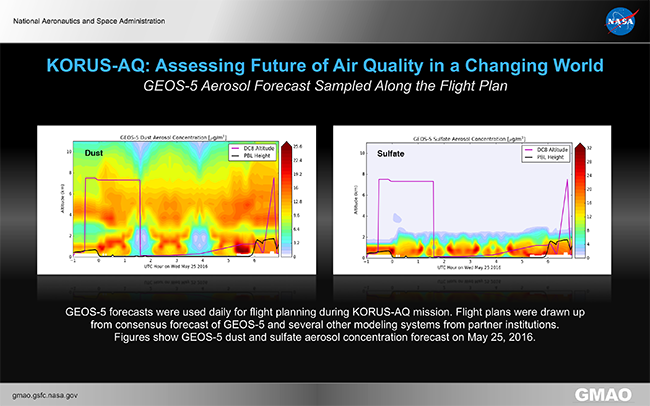KORUS-AQ
A scientific mission designed to assess the future of air quality in a changing world
The KORUS-AQ campaign was an international cooperative field study that took place in April-June 2016 based out of Osan Air Base, Songtan, South Korea. The focus of the campaign was to integrate observations from aircraft, ground sites, ships, and satellites with air quality models to understand the factors controlling air quality across the South Korean peninsula and surrounding waters. The primary science objectives of the campaign were to (1) characterize challenges and opportunities for satellite observations of air quality, (2) understand the relative importance of human and natural emissions on ozone and aerosol formation, and (3) characterize the composition and chemistry of local and trans-boundary pollution from mainland China.
During the KORUS-AQ campaign, the NASA Goddard Earth Observing System version 5 (GEOS-5) operational forecasting system was used for near real time meteorological and chemical constituent forecasting and flight planning. Other modeling systems deployed by partner institutions during the campaign also used NASA/GMAO modeling products, namely the Quick Fire Emissions Database (QFED) and NNR MODIS aerosol optical depth (AOD)—a neural network derived retrieval of AOD from MODIS radiance observations.
Post-mission, aerosol optical depth observations derived from AERONET and NASA satellite measurements will be assimilated into GEOS-5 to provide 4-dimensional meteorological and aerosol assimilated fields for use by instrument teams. Evaluation of GEOS-5 against observation from the campaign will help to identify inaccuracies in the model physical/chemical processes in the region and lead to further developments of the modeling system.


